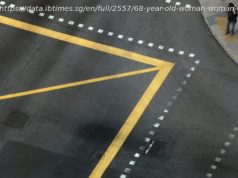The popular app has made online dating cool, but that doesn’t mean it’s easy.
„If they had Tinder when I was single…,“ the guys say, imagining the possibilities.
„You’re single? Have you not tried Tinder? “ the gals ask incredulously.
People who have never used Tinder seem to think it’s a gateway to instant connection or gratification. But those who have used the app will tell you it’s not that simple. They say the digital road to romance can be a perilous one.
And now there’s research to back them up.
Social media can impact self-esteem. A group of researchers in 2013 found that Facebook negatively impacted self-perception of young adults, while Denmark’s Happiness Institute last year found that abstaining from the social network caused spikes in reported happiness. Earlier this year, the University of Pittsburgh showed Instagram, Twitter, YouTube and Snapchat can be similarly pernicious.
But what about Tinder? The swipe-to-find-a-match dating app is certainly social. But like love itself, it’s complicated.
The company says it does everything it can to protect the self-esteem of its users, but an August 2016 study from the University of North Texas indicates the app can be tough for some.
„Tinder users reported having lower levels of satisfaction with their faces and bodies and having lower levels of self-worth than the men and women who did not use Tinder,“ said Jessica Strübel , PhD and co-author of the study, presenting her research to the American Psychological Association.
The experiment examined a group of 1,044 women and 273 men, roughly 10 percent of whom were Tinder users. These users, the report said, were less likely to be satisfied with their body, looks and life.
While Tinder’s in-house sociologist, Jessica Carbino, dismisses the study, saying the sample size was too small to gather „statistically significant results,“ Strübel found the research shocking. Not because it indicated Tinder could influence self-perception, but because it impacted men just as much as women.
„We thought females would most strongly, and adversely, be affected by using Tinder,“ research partner Trent Petrie added. „The fact that male and female Tinder users reported similar levels of psychological distress was surprising. “
This isn’t what Tinder looks like for most men, in case you’re wondering.
Tinder doesn’t release data on match percentages but, from best estimates, men get far fewer matches than women.
After a 2014 interview with Tinder CEO Sean Rad, the New York Times reported that men swiped right, or „liked“, 46 percent of the time while women did so to 14 percent of profiles. Because men make up roughly 60 percent of Tinder’s 50 million users, there are a lot less „likes“ shared between the larger group of users.
In 2009, research conducted by dating site OKCupid on its users showed that women rate „80 percent of guys worse-looking than medium. “ It was also noted that „higher rated“ men received 11 times as many messages from women as those on the lower end of the spectrum.






